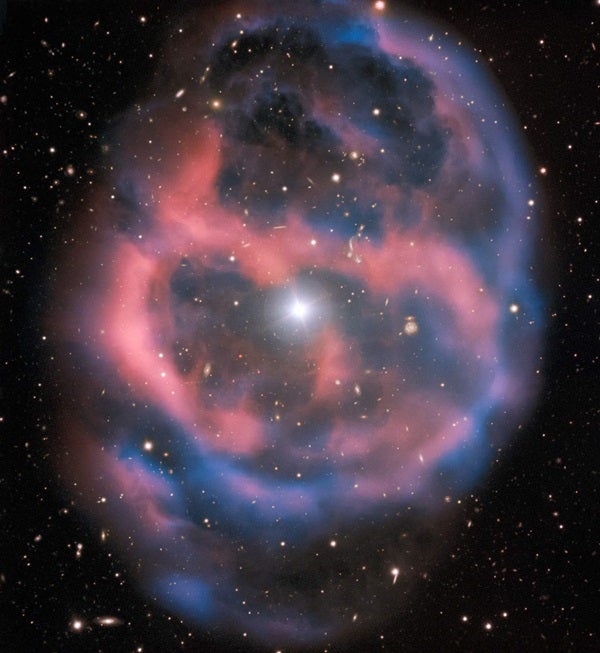In about 5 billion years, our own Sun will begin its transition into a planetary nebula. As the hydrogen fuel in the Sun’s core begins to run out, it will shrink under the star’s immense gravity. During this stage, as the Sun begins to burn helium and heavier elements, things inside it become a bit chaotic.
This chaos, as well as strong stellar winds, will cause the Sun to steadily eject tenuously held shells of gas. Over time, this material will continuously flow outward into the solar system. And as it does, it gets ionized by stellar radiation, which will create a brilliant planetary nebula that will truly be a sight to behold — at least for anyone peering at our star system from beyond. However, any potential viewers will need to act (relatively) quickly, as planetary nebulae only last about 10,000 years before they disperse and fade away.
The stunning planetary nebula ESO 577-24, which is located about 1,400 light-years from Earth, was first discovered as part of the National Geographic Society — Palomar Observatory Sky Survey way back in the 1950s. But more recently, ESO 577-24 was imaged as part of the ESO Cosmic Gems Programme, which focuses on photographing objects that are not only intriguing, but also visually appealing.










